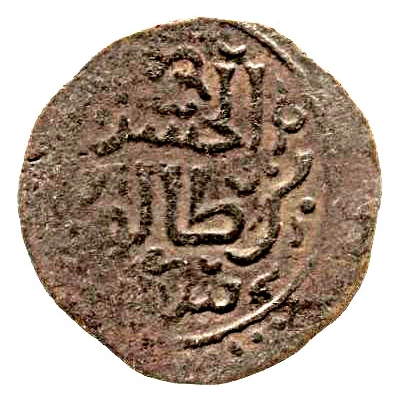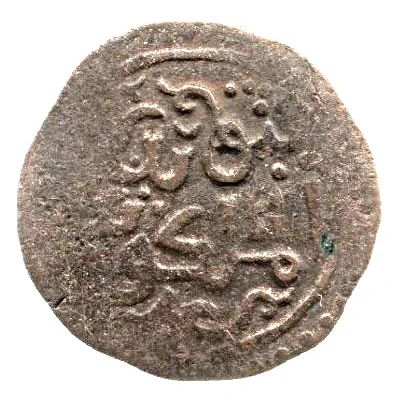


© British Museum
Fals - al-Hasan bin Talut ND
| Copper | 2.63 g | 23 mm |
| Issuer | Kilwa Sultanate (East Africa) |
|---|---|
| Sultan | al-Hasan bin Talut (1285-1302) |
| Type | Standard circulation coin |
| Years | 1285-1302 |
| Value | 1 Fals (1⁄60) |
| Currency | Dinar (957-1506) |
| Composition | Copper |
| Weight | 2.63 g |
| Diameter | 23 mm |
| Shape | Round (irregular) |
| Technique | Hammered |
| Demonetized | Yes |
| Updated | 2024-10-05 |
| Numista | N#141815 |
|---|---|
| Rarity index | 100% |
Reverse
Arabic inscription in 3 lines within circle
Script: Arabic
Lettering:
يثق برب
الملكوت
عز
Translation: trusts in the Lord of the Kingdom, he is glorious
Comment
According to https://en.wikipedia.org/wiki/Kilwa_SultanateRuled between 1277-1294, al-Hassan ibn Talut (grandson of Ali ibn Dawud) - seized power by force, ruled 18 years; had a reputation as "an excellent knight"
Other Pictures:
© Image courtesy of British Musseum
Interesting fact
One interesting fact about this coin is that it was used as a form of currency in the Kilwa Sultanate, which was a powerful and influential empire in East Africa during the 13th and 14th centuries. The coin's design and inscriptions reflect the Islamic culture and religion of the region, and its copper composition was a common material used for coinage during that time period. Despite its small weight, the coin played a significant role in the economy and trade of the region, and its preservation today provides valuable insight into the history and culture of the Kilwa Sultanate.